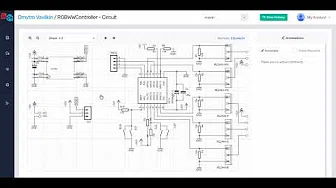Files
Last update 8 years 2 months
by
Hu-Cheng Lee
| FileslibraryTimerOneexamplesInterrupt | |
|---|---|
| .. | |
| Interrupt.pde |
Interrupt.pde#include <TimerOne.h> // This example uses the timer interrupt to blink an LED // and also demonstrates how to share a variable between // the interrupt and the main program. const int led = LED_BUILTIN; // the pin with a LED void setup(void) { pinMode(led, OUTPUT); Timer1.initialize(150000); Timer1.attachInterrupt(blinkLED); // blinkLED to run every 0.15 seconds Serial.begin(9600); } // The interrupt will blink the LED, and keep // track of how many times it has blinked. int ledState = LOW; volatile unsigned long blinkCount = 0; // use volatile for shared variables void blinkLED(void) { if (ledState == LOW) { ledState = HIGH; blinkCount = blinkCount + 1; // increase when LED turns on } else { ledState = LOW; } digitalWrite(led, ledState); } // The main program will print the blink count // to the Arduino Serial Monitor void loop(void) { unsigned long blinkCopy; // holds a copy of the blinkCount // to read a variable which the interrupt code writes, we // must temporarily disable interrupts, to be sure it will // not change while we are reading. To minimize the time // with interrupts off, just quickly make a copy, and then // use the copy while allowing the interrupt to keep working. noInterrupts(); blinkCopy = blinkCount; interrupts(); Serial.print("blinkCount = "); Serial.println(blinkCopy); delay(100); }








